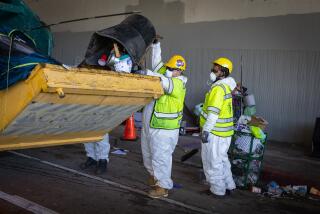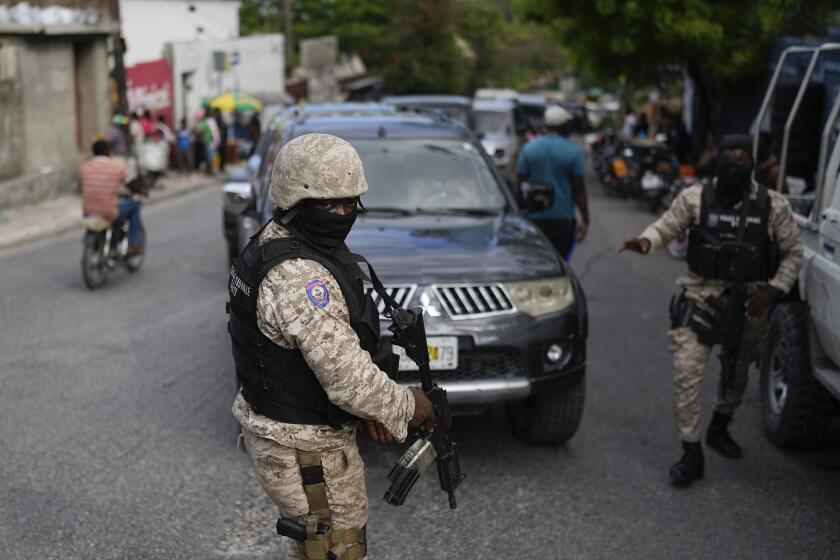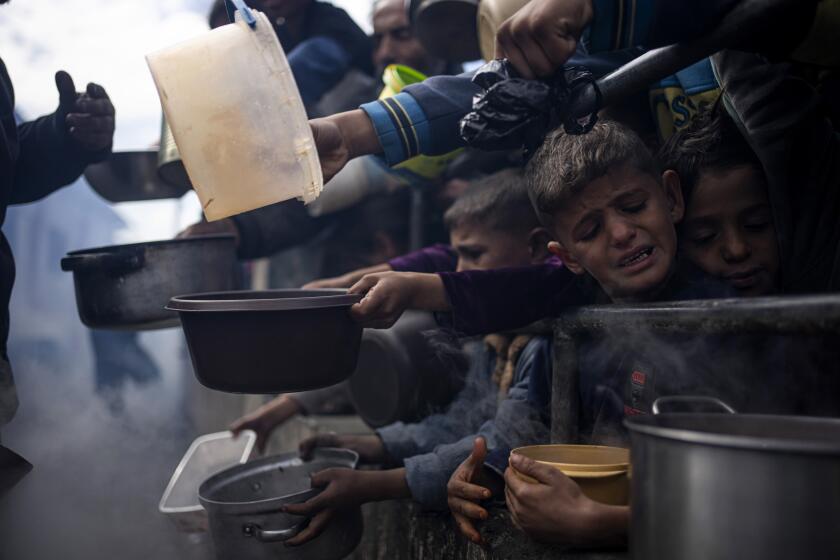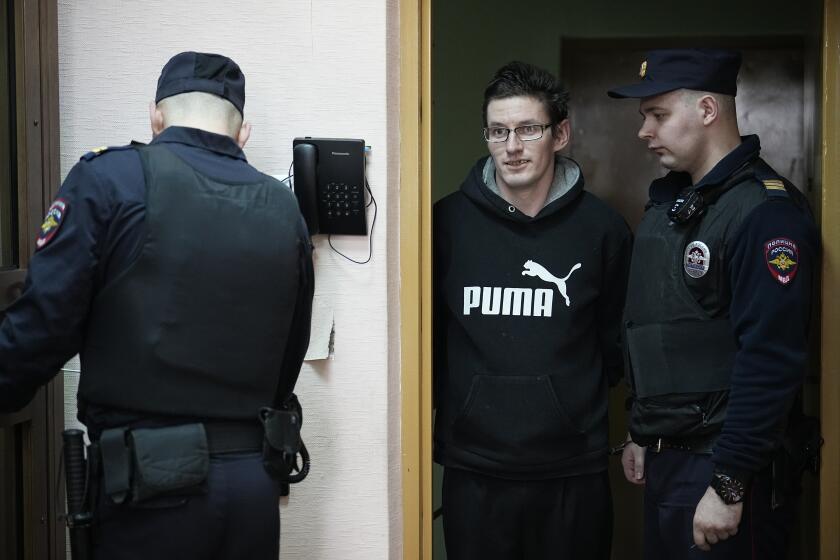Deadly shooting at Seattle’s ‘Jungle’ homeless camp spurs soul-searching in the city
Within an hour of the violence at a homeless encampment known simply as the “Jungle,” the mayor asked himself whether he might be at least partly to blame.
“I can’t help but wonder: Did I act too late?” an anguished-looking Ed Murray said as he talked with the news media late Wednesday. “It’s on me in the end.”
In a city that prides itself on its compassion but has wrestled with how to respond to its staggering homeless population, the violence that had erupted the night before in the Jungle — two dead, three critically injured — stirred old fears.
In November, the mayor and King County Executive Dow Constantine declared a state of emergency to deal with Seattle’s homeless crisis, following the lead of Portland, Ore. The declarations enable the cities to seek aid from the state and federal governments.
On Tuesday, the mayor was preparing to give a televised speech on homelessness — in which he would rally citizens to join him in finally solving the problem — when he learned of the shooting. Murray went on as planned, proposing the city double property taxes on homes to help raise $49 million in additional homeless funding.
“Our region is third in the nation, behind only New York and Los Angeles, in providing 8,300 homes for people who were homeless,” the mayor said. “But this is not enough and we will do more.”
But his efforts have been slowed by resistance from residents and business owners over the potential that homeless camps might move to their neighborhoods. Others complained that when the city opened several new tent cities and a camp with one-room houses, officials simultaneously shut down hundreds of small, makeshift camps, limiting any net gain in available space. The closure tactics used in more than 500 camp sweeps last year were also questioned.
“My concern,” said Tim Harris, director of Real Change, a weekly newspaper that bills itself as the voice of Seattle’s poor and homeless, “is that sweeps of unauthorized encampments are not being conducted with adequate outreach resources or transparency, and that they’re being done in a way that just creates hardship by chasing people around and tossing their stuff.”
Worried about an upswing in crime and fleets of aging recreational vehicles parked on their streets, some communities have hired private security firms to patrol their neighborhoods. In one upscale area, Magnolia, with expansive views of Elliott Bay and Puget Sound, unarmed uniformed officers patrol the streets in blue and white Humvees, calling 911 when help is needed.
Although he is critical at times, Harris said he thinks the city is making a sincere effort to resolve the crisis by using such relatively inexpensive tactics as sanctioned encampments and safe RV lots.
“The mayor’s state of emergency is an aggressive campaign to address the issue locally and rally state and federal resources,” Harris said. “It’s not enough on its own, but it’s probably the most impressive local response anywhere.”
According to a one-night count last year by the Seattle/King County Coalition on Homelessness, there were more than 10,000 homeless in the county. About a third of them were in transitional housing and another third in shelters. But almost 3,800 were living on Seattle streets — a 21% increase over 2014. Many were counted after being found sleeping in doorways, beneath overpasses, in vehicles and alleys, or simply walking around.
“We are involved in a homelessness crisis the like that we have not seen since the Great Depression,” Murray said. “There is no simple answer.”
One of the chief concerns is a sharp rise in deaths on the street. According to a count by a volunteer group, Women in Black, 66 homeless people died here last year. Most were natural deaths, but many were suicides and 11 were homicides.
“This is the highest number of calendar-year deaths since we began our vigils 16 years ago — a heartbreaking new record!” the group said in a Facebook post.
“Unsheltered homeless people are extremely vulnerable to violence and street predators,” Harris said, “and we’re seeing more of that as the numbers of people on the street keep going up.”
Join the conversation on Facebook >>
Officials say Tuesday night’s shooting at the Jungle wasn’t random, and most likely stemmed from a low-level drug deal.
“We have no evidence at this point that they were targeted because they were homeless,” Seattle Police Chief Kathleen O’Toole said.
Police sought at least two people who were seen shooting up the encampment beneath Interstate 5 south of downtown just after 7 p.m. One victim died at the scene and another at Harborview Medical Center. Police identified the dead as James Q. Tran, 33, and Jennine L. Brooks, 45. A hospital representative said the three survivors, a man and two women, were in serious but stable condition from multiple gunshot wounds.
The Jungle has drawn the homeless since at least the 1980s. Some visitors throw down bindles and bedrolls for the night. Others carve out crude living spaces with discarded furniture and salvaged beddings, facing the long siege against freezing weather, hunger and potential violence.
Several of Murray’s predecessors vowed to clean it up, but the transients typically moved briefly to other spots, only to return later.
“It’s homeless whack-a-mole,” one worried neighbor told the Seattle Times.
Murray said he shared the frustrations of residents.
“I know we are not always getting it right. But the fact is, we are in the midst of a growing national crisis of homelessness,” he said. “People are dying on our streets. We are working on a complex problem in real time. I ask that you work with us, so that we can create positive change.”
Anderson is a special correspondent.
MORE FROM NATION
Oregon standoff: Final holdouts say they just want to go home
Trump-less Republican debate leaves the rest of the field with a choice: Attack or ignore
Where was the FBI during the armed standoff in Oregon? Out of sight, but listening and watching
More to Read
Start your day right
Sign up for Essential California for news, features and recommendations from the L.A. Times and beyond in your inbox six days a week.
You may occasionally receive promotional content from the Los Angeles Times.






